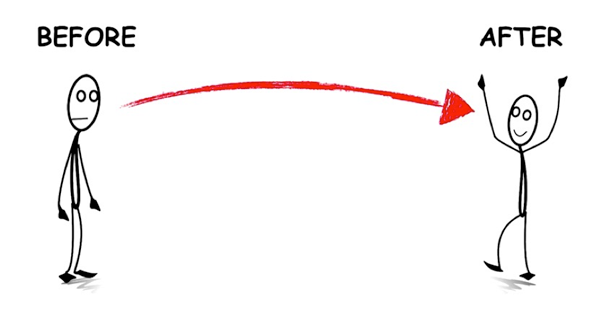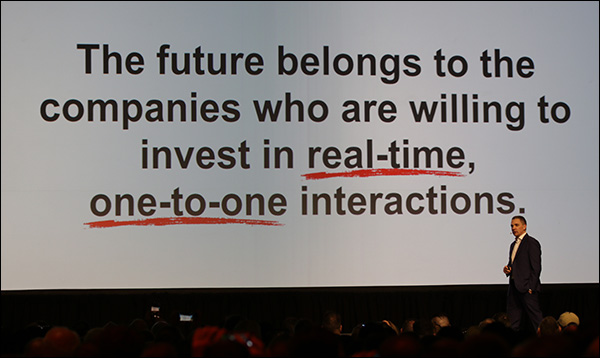A LOT happened over the last 3 days at Traffic & Conversion Summit 2019.
But over the course of 119 sessions, we noticed some common themes and takeaways that we think every marketer should know…
Takeaway #1: The Marketing World is About to Be Massively Disrupted
In 2019, we are living in a time of innovation and disruption. Marketers who don’t create a movement will be left behind.
During his Day 1 Keynote, Ryan Deiss outlined his strategy to ensure DigitalMarketer is one of those game changers.
He is implementing one strategy: Do the complete opposite of what used to work really well.
- Everything that is fast becomes slow
- Everything that is big becomes small
- Everything that is small becomes big
Let’s use DM as a case study to see how Ryan is applying this strategy so you can use it as inspiration in your business…
To Shift from Fast to Slow, DigitalMarketer Is:
Placing emphasis on journeys (i.e. the Customer Value Journey) over funnels.
This is being done by changing automated customer interactions to one-on-one conversations. We use automation to start the conversation with our customers and move it toward a human interaction.
Plus, we’re removing the focus from scalable ideas and trackable strategies to ideas that don’t scale and strategies that can’t be tracked. Like when we launched 2 new podcasts last year. We’re doing this because it feels like the right thing to do for our customers.
To Shift from Big to Small, DigitalMarketer Is:
Segmenting our customers into the following categories:
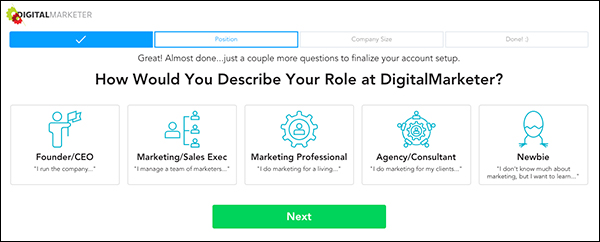
And we’re using longer form fields to do just that. It may sacrifice some conversions in the process, but it’s leading to better data and more qualified leads.
Then, we use the customer’s self-identification to pair them with the best DigitalMarketer products for them (i.e. WarRoom, certifications, the Certified Partner program, etc.).
To Shift from Small to Big, DigitalMarketer Is:
Asking what do we fundamentally believe to be true about the universe and our place in it?
In 2019, marketers need to create movements.
Don’t tell stories about your product—change the stories the customers tell about themselves.
Movements matter and if you want your business to matter, start a movement.
We’re doing this with our products, like with our newly launched company and product, Praxio.
(NOTE: Need a helping hand with your digital marketing efforts? Or maybe you just want proven, actionable marketing tools, tactics, and templates to implement in your business? Check out the latest deal from DigitalMarketer, and you will be on your way to helping your business grow.)
Takeaway #2: There Are 2 Things in Digital Marketing that Will Never Change
Ryan closed out his Day 1 Keynote with a reminder to all marketers: no matter what the future of digital marketing holds, there will always be 2 certainties:
- We will always need to generate traffic
- We will always need to convert that traffic into revenue
It all comes down to traffic and conversion.
So at the end of the day, it all comes down to this.
No matter how your company may change in the future, no matter what you’re implementing next, it all comes down to traffic and conversion.
So make sure you keep traffic and conversion at the core of your digital marketing strategy.
Takeaway #3: Use Authority to Capture the Heart, Mind & Wallet of Your Audience
In his Day 2 Keynote, Ryan reminded people about the importance of creating a movement.
But, you can’t create a movement unless you have authority.
No one will deny the importance of creating authority for your brand. But building authority is easier said than done.
So how do you do it?
There are 5 elements of authority:
1. A Plan
It is impossible to have a movement without a plan. Nobody wants to follow a leader without a map.
Do you have a plan people can tell others about?
Ask yourself, what is the step-by-step plan for success that you have created for your clients and customers?
2. Answer Your Customers’ Questions
You need to come down and meet your customers where they are by answering their specific questions.
Why is Dave Ramsey so popular? One reason is because he answers the same questions over, and over… and over, again. He may be answering the same few questions about personal finance, but the question comes from a different person each time.
So answer your customers’ questions, no matter how many times you’ve said the same thing. New customers will have the same questions.
Use AnswerThePublic.com to find the questions your customers are asking and use Quora to answer those questions. Or create a FAQ section on your homepage like we do here…
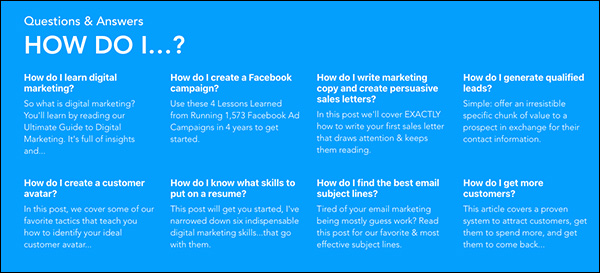
So, ask yourself, what are 10-20 ultra-specific questions your customers are asking that you can answer?
3. Speak in Absolutes
Tell your customers what they can and can’t do. This is a strategy you’ll see Dave Ramsey, Grant Cardone, and Gary Vaynerchuk using.
They speak in absolutes. Just like Gary does here.
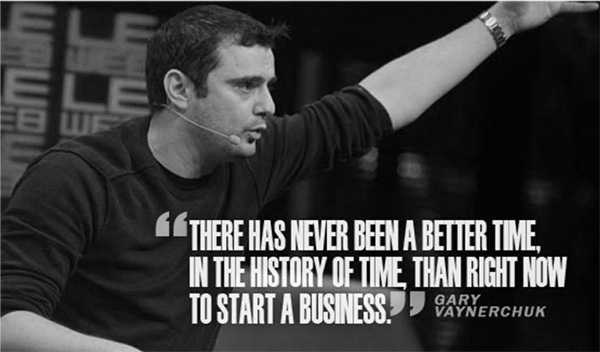
Love ’em or hate ’em. Agree with them or not, they stand for something. Speaking in absolutes tells people what you stand for.
If you qualify everything you say, you may never be wrong, and you may never piss anyone off, but you will risk sounding like you don’t stand for anything.
If you stand for everything, you stand for nothing, sort of thing.
So, use these words to convey your authority:
- All
- None
- Always
- Now
- Never
- Period
- Guaranteed
- I promise
- Going to happen
- Fact
- Evil
- Dumb
- Stupid
- Genius
- Best
- Greatest
- Worst
- One thing
- Everything
- Nothing
- Everyone
- No one
When you start getting haters, this is when you know your absolutes are working. This also means you have to be prepared to support your absolutes and be prepared to be challenged.
So answer this, what absolutes are you willing to maintain even in the face of haters?
4. Define Your Core Beliefs
Your core belief speaks to your place in the universe. How would you define your place in the universe? Your business’ place?
This belief is the reason people want to buy or work with your business. If your core belief aligns with your audiences’ core belief, they will get behind what you are saying and they will become a customer.
For example, at DigitalMarketer our core belief is that the best product or service should win.
Think about and answer, what do you fundamentally believe to be true about the universe and your place in it? Your brands place in it?
5. Change Their Rites or Rituals
There are 3 options to get people to become raving fans of your brand.
Option 1: Get People to Do Something They Normally Wouldn’t Do
Tony Robbins does this by getting people to walk on fire.
Dave Ramsey does this by getting people to call into his radio show and yell, “I’m debt free!”.
None of these behaviors are “normal.”
But getting people to do just that builds a community. And there’s power in that.
(RELATED: 8 Essential Strategies to Build a Thriving Customer Community)
Option 2: Get People to Alter an Existing Routine
Is coffee part of your morning ritual?
Do you start your coffee maker before you’ve even used the bathroom?
What about putting butter in that freshly brewed cup of coffee? Is that also part of your routine?
It is for some people.
Bulletproof Coffee got people to make butter coffee. They nailed this option and altered a pre-existing routine for many of us.
And because of it, Bulletproof Coffee created a movement.
Option 3: Get People to “Lick” Your Brand by Giving Them Free Promotional Items
As a kid, did you ever lick something to claim it?
Your big brother wants the last cookie. Nope! Lick. Mine. Claimed.
So along those lines, how can you get your customers to “lick” your brand? To claim you.
Offering free incentive items is one way to do it.
Beachbody is the perfect example of this—if you send in a before and after picture, they’ll send you a t-shirt. A t-shirt that you can wear with pride for all the hard work you’ve put into changing your body.
It serves as a trophy or reward for your customer. And it also serves as a promotional item for your brand.
And promotional items start conversations. “Cool t-shirt. Where’d you get it?” And with that, people are talking about your brand. And it all happened naturally.
At DigitalMarketer, we give away stickers of our branded gears. And people put them on their laptops. Customers send in pictures of it, and we see the gears throughout Austin where we’re based. People are claiming us.
So finally, what customs and rituals should you promote and institutionalize?
Keep in mind, it’s hard to embody all 5 of these elements of authority. Really, only the world’s dominant religions have come close.
But if you can start bringing in these elements to your overall business strategy, you’ll see positive results.
Start by focusing on 1 element to build your authority.
Takeaway #4: It’s Good to Be Better, But It’s Better to Be Different
Do you want to fascinate? To cut through the noise and grab and hold people’s attention.
What business wouldn’t? Which is why we asked the Queen of Fascination, Sally Hogshead, to kick off Day 3 of T&C.
Sally’s expertise lies in helping brands discover what makes them more fascinating than the competition.
In her Day 3 Opening Keynote, Sally explained fascination is an intense state of focus where a person is bewitched and held captive by what they’re seeing.
What qualities make people fascinated by you and showcase you as intensely valuable?
This can be a hard question for many to answer. You can start by focusing in on what makes you different. As Sally said throughout her presentation, “It’s good to be better, but it’s better to be different.”
She also dove into the Personal Brand Archetypes. This is how the world sees you. This is what makes you different and therefore fascinating. Based off of your Primary Advantage and your Secondary Advantage, you’ll understand what makes you captivating.
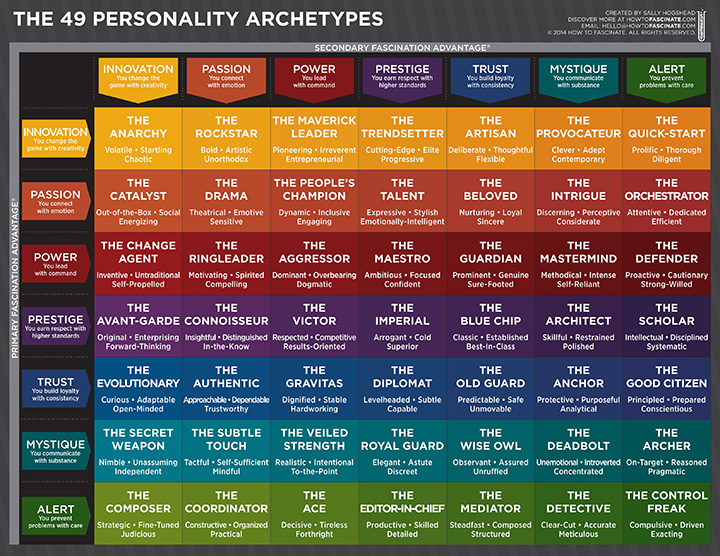
For example, Ryan Deiss, CEO of DigitalMarketer, is positioned as a thought leader in digital marketing. Why? Because he is the “Maestro” personality archetype and is seen with power and prestige. The adjectives that best describe Ryan are ambitious, focused, and confident.
Ryan can use these words to differentiate himself from the competition.
What YOU Took Away from T&C
But we weren’t the only ones who had key takeaways. We loved hearing the aha moments our attendees had, like…
Brands that tell stories create movements and go on to rule the world.
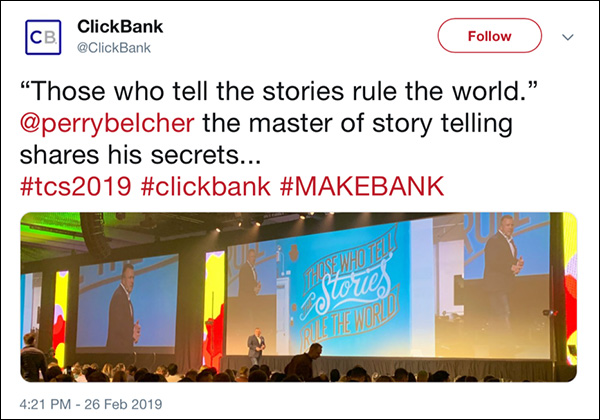
Business partners should complement each other, not be copies of each other. Perry Belcher pointed out the reason he, Ryan, and Roland have been so successful is because of their varying personality traits that cumulate to a power trio.
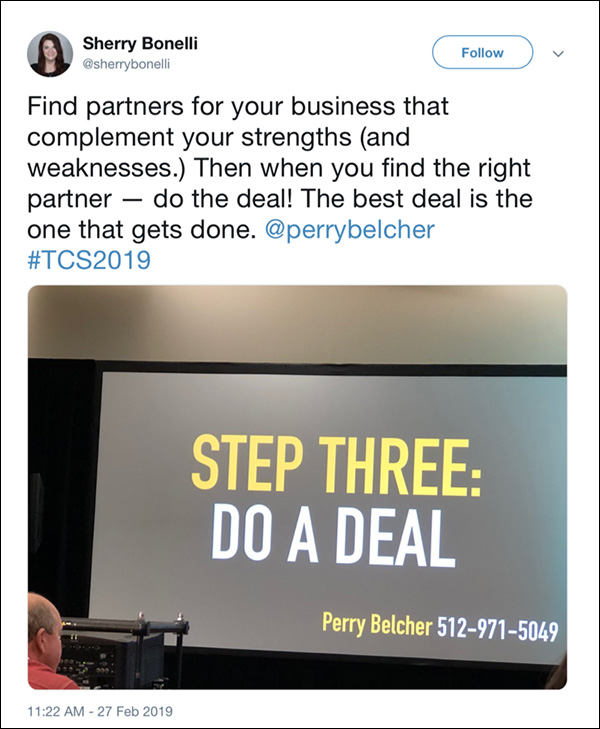
How do you save your business? By putting in the work. Choose 3 specific takeaways from the 119 presentations at Traffic & Conversion 2019, and start implementing those in your business.
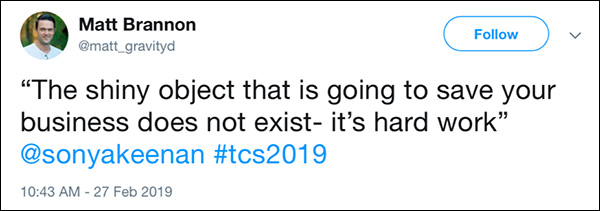
Remember what Ryan said in his Day One Opening Keynote? Everything big needs to become smaller.
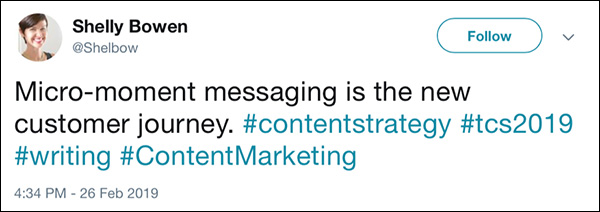
If you can get people to feel something, you can get them to take their wallet out.
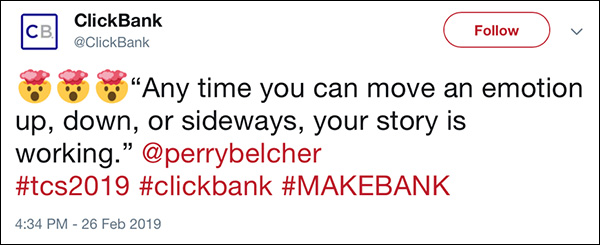
Last Key Takeaway
There is nothing that is out of our league.
As business owners, and specifically as humans, we have the ability to solve any problem or adversity that we are facing. That was the theme of Sir Richard Branson’s Day 1 Closing Keynote.
Case in point, after wrapping up his keynote, Branson planned to fly back to Necker Island to meet with entrepreneurs who are trying to decrease the amount of carbon in the atmosphere by figuring out a way to vacuum it out and transform it into something less harmful.
If there’s anything we want you to take away from the 10th Traffic & Conversion Summit, it’s this:
“Changing the world begins with a small group of people who simply refuse to accept the unacceptable.” ~Richard Branson
See you next year!
(NOTE: Need a helping hand with your digital marketing efforts? Or maybe you just want proven, actionable marketing tools, tactics, and templates to implement in your business? Check out the latest deal from DigitalMarketer, and you will be on your way to helping your business grow.)
The post Top 10 Takeaways from Traffic & Conversion Summit 2019 Every Marketer Should Know appeared first on DigitalMarketer.
from Top 10 Takeaways from Traffic & Conversion Summit 2019 Every Marketer Should Know










